Design & Construction
Role of Green Roofs in Urban Sustainability
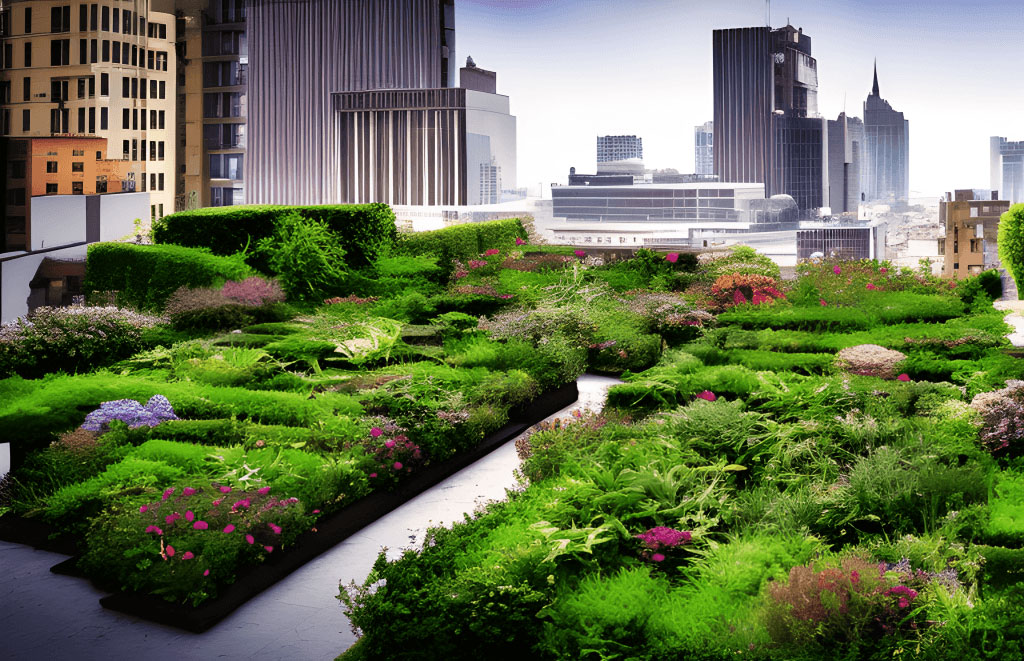
Urban sustainability is a pressing global concern, and green roofs have emerged as a valuable solution to promote sustainability in urban areas. Green roofs, also known as living roofs or vegetated roofs, are roofs covered with vegetation and soil, providing numerous environmental, social, and economic benefits. This article explores the role of green roofs in urban sustainability, highlighting their positive impact on mitigating climate change, enhancing biodiversity, improving air quality, reducing energy consumption, and creating more livable cities.
Understanding Green Roofs
Green roofs are designed systems that incorporate vegetation, growing media, and drainage layers on rooftops. They can be implemented on a variety of buildings, including residential, commercial, and industrial structures. Green roofs offer a natural and sustainable approach to transform underutilized roof spaces into functional and environmentally friendly areas.
Mitigating Climate Change
Green roofs play a crucial role in mitigating climate change by reducing carbon dioxide (CO2) emissions. Through the process of photosynthesis, plants on green roofs absorb CO2 and release oxygen, acting as natural carbon sinks. The additional green spaces created by green roofs also contribute to overall urban greening efforts, reducing the heat-trapping effects of concrete and improving air quality.
Enhancing Biodiversity
In urban areas, green spaces are essential for supporting biodiversity. Green roofs provide habitats for a variety of plant species, insects, birds, and other wildlife. By creating pockets of greenery in an otherwise built-up environment, green roofs help preserve biodiversity, support pollinators, and contribute to urban ecosystems. They can serve as stepping stones for species movement and gene flow, promoting urban biodiversity conservation.
Improving Air Quality
Urban areas often suffer from poor air quality due to pollution. Green roofs help mitigate this issue by acting as filters. The plants and soil on green roofs capture and absorb pollutants, such as particulate matter and heavy metals, reducing their presence in the air. Through the process of transpiration, green roofs also release moisture, which helps cool the air and reduce the formation of smog and urban air pollutants.
Reducing Urban Heat Island Effect
Urban heat islands occur when cities experience significantly higher temperatures than surrounding rural areas due to the abundance of heat-absorbing surfaces like concrete and asphalt. Green roofs help combat the urban heat island effect by providing natural cooling. The vegetation and evapotranspiration process on green roofs help reduce surface temperatures and cool the surrounding air, creating more comfortable microclimates and reducing the need for energy-intensive air conditioning.
Stormwater Management
Urban areas often struggle with stormwater management, leading to issues like flooding and water pollution. Green roofs act as effective stormwater management tools by retaining rainwater and reducing runoff. The vegetation and growing media on green roofs absorb rainfall, reducing the burden on stormwater infrastructure. This helps alleviate pressure on urban drainage systems and improves water quality by filtering pollutants.
Energy Efficiency
Green roofs contribute to energy efficiency in buildings by providing insulation and reducing the demand for heating and cooling. The vegetation and soil layers act as natural thermal barriers, reducing heat transfer through the roof. This insulation effect helps regulate indoor temperatures, reducing the need for artificial heating and cooling systems and saving energy. Consequently, green roofs can lower energy costs and carbon emissions associated with building operation.
Noise Reduction
Urban environments are often characterized by high noise levels. Green roofs can help mitigate noise pollution by absorbing and reflecting sound waves. The vegetation, soil, and other layers on green roofs act as sound barriers, reducing noise transmission into buildings and creating more peaceful and comfortable living and working environments.
Improved Aesthetics and Well-being
Green roofs contribute to the aesthetic appeal of urban landscapes, transforming concrete jungles into vibrant and visually pleasing environments. The presence of green spaces, even at elevated heights, has a positive impact on mental well-being, reducing stress and promoting relaxation. Green roofs also offer opportunities for recreational activities, urban agriculture, and community engagement, further enhancing the quality of life in cities.
Economic Benefits
Green roofs provide numerous economic benefits. They extend the lifespan of the roof membrane by protecting it from UV radiation and temperature fluctuations, reducing maintenance and replacement costs. Additionally, green roofs improve property values and marketability, attracting tenants and customers who value sustainability and a connection with nature. The energy savings from reduced cooling and heating needs also contribute to long-term financial benefits.
Green Roof Design Considerations
Designing effective green roofs requires careful consideration of factors such as load capacity, waterproofing, plant selection, and maintenance requirements. Structural integrity assessments, professional expertise, and collaboration with architects, engineers, and horticulturists are essential to ensure safe and successful green roof implementation. Adequate irrigation systems, access for maintenance, and consideration of local climate conditions are also crucial for green roof design.
Overcoming Challenges
Implementing green roofs may present challenges, such as structural limitations, cost constraints, and lack of awareness or expertise. Engaging with experienced professionals, conducting feasibility studies, and exploring funding opportunities can help overcome these challenges. Building codes and regulations may need to be updated or adapted to encourage green roof implementation, and collaboration between government agencies, researchers, and industry stakeholders is crucial for success.
Policy and Incentives
Government policies and incentives play a vital role in promoting green roofs as part of urban sustainability strategies. Local municipalities can offer tax incentives, grants, or subsidies for green roof installation. Policy frameworks that mandate or incentivize green roofs in new construction or provide expedited permitting processes can accelerate their adoption. Collaborative efforts between governments, organizations, and communities are essential for developing effective policies and ensuring their implementation.
Community Engagement
Engaging the community is key to maximizing the benefits of green roofs. Awareness campaigns, educational programs, and community involvement in green roof projects can help foster a sense of ownership, encourage participation, and build support for sustainable urban development. Green roofs can serve as platforms for urban agriculture, community gardens, and educational initiatives, creating opportunities for social interaction and connecting people with nature.
Conclusion
Green roofs offer a multitude of benefits that contribute to urban sustainability. By mitigating climate change, enhancing biodiversity, improving air quality, reducing the urban heat island effect, managing stormwater, promoting energy efficiency, reducing noise pollution, and providing numerous economic and social advantages, green roofs are essential components of sustainable urban development. Through collaboration, innovative design, policy support, and community engagement, we can harness the power of green roofs to create greener, healthier, and more livable cities.
Frequently Asked Questions (FAQs)
1. Can any building have a green roof? Most buildings can accommodate green roofs, but it is essential to consider structural capacity, load-bearing requirements, and access for maintenance. Consulting with structural engineers and professionals experienced in green roof design is crucial to determine the feasibility and suitability of a green roof for a specific building.
2. Do green roofs require a lot of maintenance? Green roofs do require regular maintenance to ensure their longevity and optimal performance. Tasks may include irrigation, weed control, fertilization, pruning, and monitoring for any drainage or waterproofing issues. However, with proper design and selection of appropriate plant species, maintenance requirements can be minimized.
3. Can green roofs be retrofitted onto existing buildings? Yes, green roofs can be retrofitted onto existing buildings, although certain considerations need to be taken into account, such as structural modifications and load capacity. Consultation with experts in green roof retrofitting is essential to assess the feasibility and implement the necessary adjustments.
4. Are green roofs expensive to install? The cost of installing a green roof can vary depending on factors such as the size of the roof, the complexity of the design, and the selection of materials. While initial installation costs may be higher compared to conventional roofs, the long-term benefits, such as energy savings, extended roof lifespan, and improved property value, can outweigh the upfront expenses.
5. Can green roofs help reduce energy consumption in buildings? Yes, green roofs contribute to energy efficiency by reducing the need for artificial cooling and heating. The insulation provided by the vegetation and growing media helps regulate indoor temperatures, leading to reduced energy consumption and lower utility bills. Green roofs are particularly effective in mitigating heat gain during hot seasons, reducing the reliance on air conditioning.
Design & Construction
Green Construction: The Role of Sludge Dewatering Machine in Waste Reduction
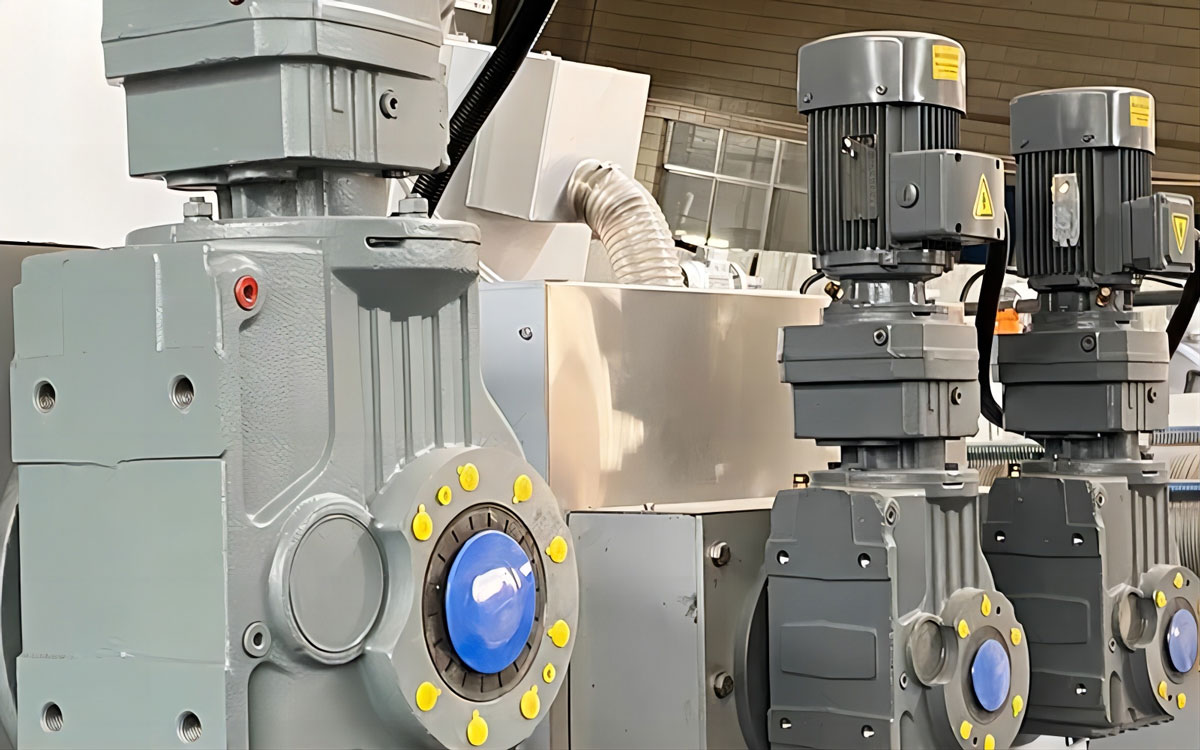
Green construction is an evolving field that emphasizes sustainable practices and environmentally friendly approaches to building projects. One crucial aspect of this movement is waste reduction, and sludge dewatering machines play a pivotal role in achieving this goal. In this article, we will explore the significance of sludge dewatering machines in the context of green construction and how they contribute to minimizing waste in construction projects.
Understanding Sludge in Construction
Sludge is a byproduct generated in various construction processes, particularly in activities involving wastewater treatment, concrete production, and excavation. This sludge often contains a high percentage of water, making it challenging to manage and dispose of efficiently. Traditional methods of handling sludge involve transporting it to landfills or incineration facilities, both of which have significant environmental impacts.
The Need for Waste Reduction in Construction
The construction industry is notorious for its substantial contribution to waste generation.According to the U.S. Environmental Protection Agency (EPA), in the United States alone, construction and demolition projects generate approximately 600 million tons of waste each year.Green construction seeks to address this issue by adopting practices that reduce waste, conserve resources, and minimize environmental impact.
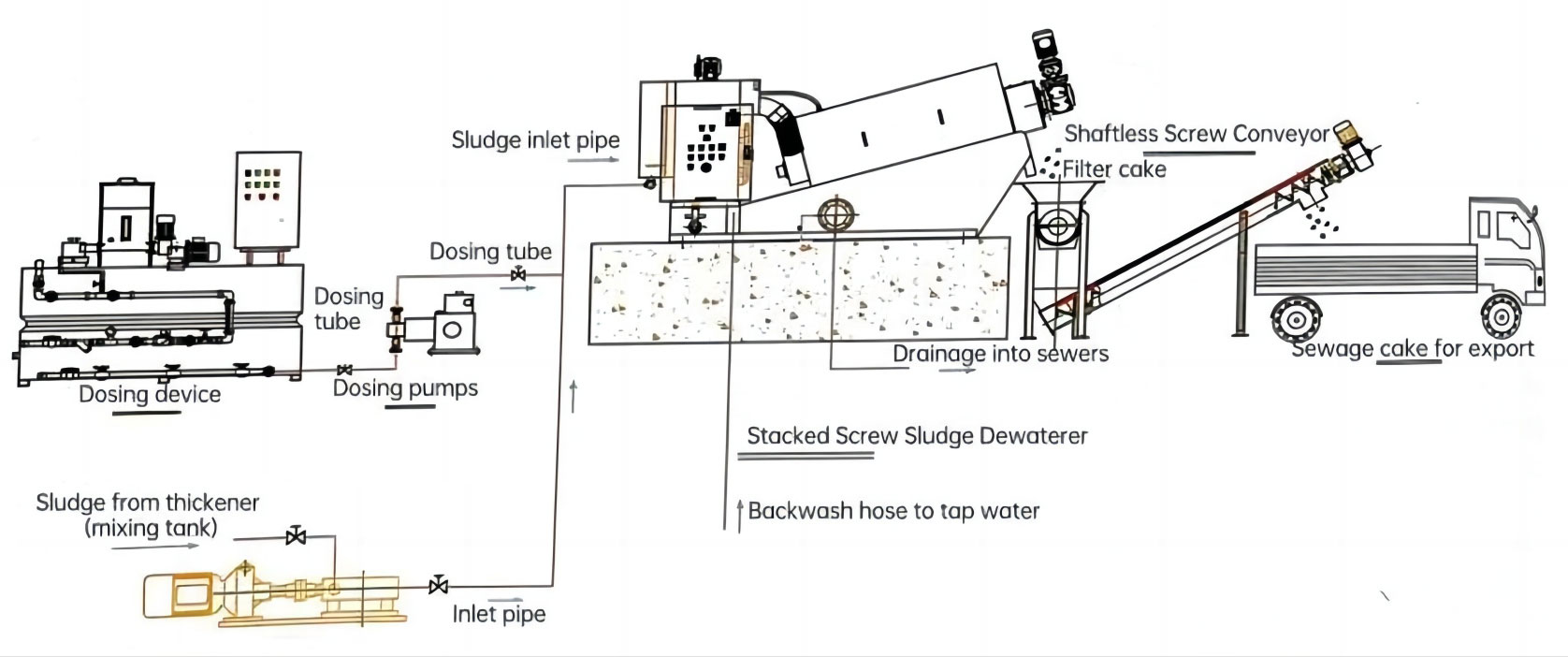
The Role of Sludge Dewatering Machines
Sludge dryers play an important role in reducing waste by effectively removing moisture in sludge, thereby reducing its volume and weight. These machines utilize various technologies, such as centrifugation, belt filtration, and screw presses, to separate water from the sludge, leaving behind a drier and more manageable residue.
1. Centrifugation
Centrifuges are commonly used in sludge dewatering processes. They operate by spinning the sludge at high speeds, forcing the water to separate from the solid particles due to centrifugal force.This causes the sediment to solidify, making it easier to handle and transport.
2. Belt Filtration
Belt filter presses are another popular choice for sludge dewatering. In this process, sludge is fed onto a continuous belt filter, and as the belt passes through a series of rollers, water is squeezed out. The remaining sludge is then collected as a drier cake, reducing its volume significantly.
3. Screw Presses
Screw presses work by compressing the sludge between two rotating screws, effectively squeezing out the water. This method is efficient and requires less energy compared to some other dewatering techniques.
Environmental Benefits of Sludge Dewatering
The use of sludge dewatering machines in green construction offers several environmental benefits:
1. Reduced Landfill Dependence
As the sediment dries, the amount of waste generated will be significantly reduced. This helps minimize reliance on landfill and reduces stress on already crowded spaces.
2. Lower Transportation Costs
Dried mud is lighter and wetter, lowering transportation costs.Reducing transportation demand helps reduce carbon dioxide emissions and the environmental impact of construction projects.
3. Resource Conservation
Mud generally contains valuable materials that can be recovered.By dewatering the sludge, these materials become more accessible for recovery, promoting resource conservation and circular economy principles in construction.
4. Energy Efficiency
Sludge dewatering processes, when compared to alternative waste disposal methods like incineration, are often more energy-efficient. The use of advanced technologies in dewatering machines allows for the extraction of water with minimal energy consumption.
Case Studies: Success Stories in Green Construction
Several construction projects around the world have successfully implemented sludge dewatering machines to achieve waste reduction goals.
1. The Pearl River Tower, China
The Pearl River Tower in Guangzhou, China, is a shining example of green construction. The project incorporated advanced sludge dewatering systems during its construction phase, significantly minimizing waste and environmental impact.
2. One Central Park, Australia
One Central Park in Sydney, Australia, utilized innovative sludge dewatering techniques to manage wastewater effectively. The leader in green architecture was recognized for the project’s commitment to sustainable practices.
Challenges and Considerations
Although sludge dryers have significant advantages, there are some issues and caveats:
1. Initial Investment
The upfront cost of acquiring and installing sludge dewatering equipment can be a barrier for some construction projects. However, many industry experts believe that the cost savings and long-term environmental effects outweigh the initial investment.
2. Maintenance and Operation
Proper maintenance and operation of sludge dewatering machines are essential for their effective performance. Construction teams need to be trained in using these technologies to ensure optimal results.
3. Technology Selection
Choosing the right sludge dewatering technology depends on various factors, including the type of sludge produced, project scale, and budget. Construction teams should carefully evaluate their specific needs before investing in a particular dewatering solution.
The role that sludge dewatering machines play in creating sustainable and environmentally friendly buildings should not be underestimated.These innovative technologies contribute significantly to waste reduction, lower environmental impact, and resource conservation in the construction industry. As more construction projects embrace green practices, the integration of sludge dewatering machines is likely to become a standard and essential component of sustainable building processes. By investing in these technologies, the construction industry can move closer to achieving a balance between infrastructure development and environmental responsibility.
Design & Construction
Role of Building Codes in Promoting Green Construction
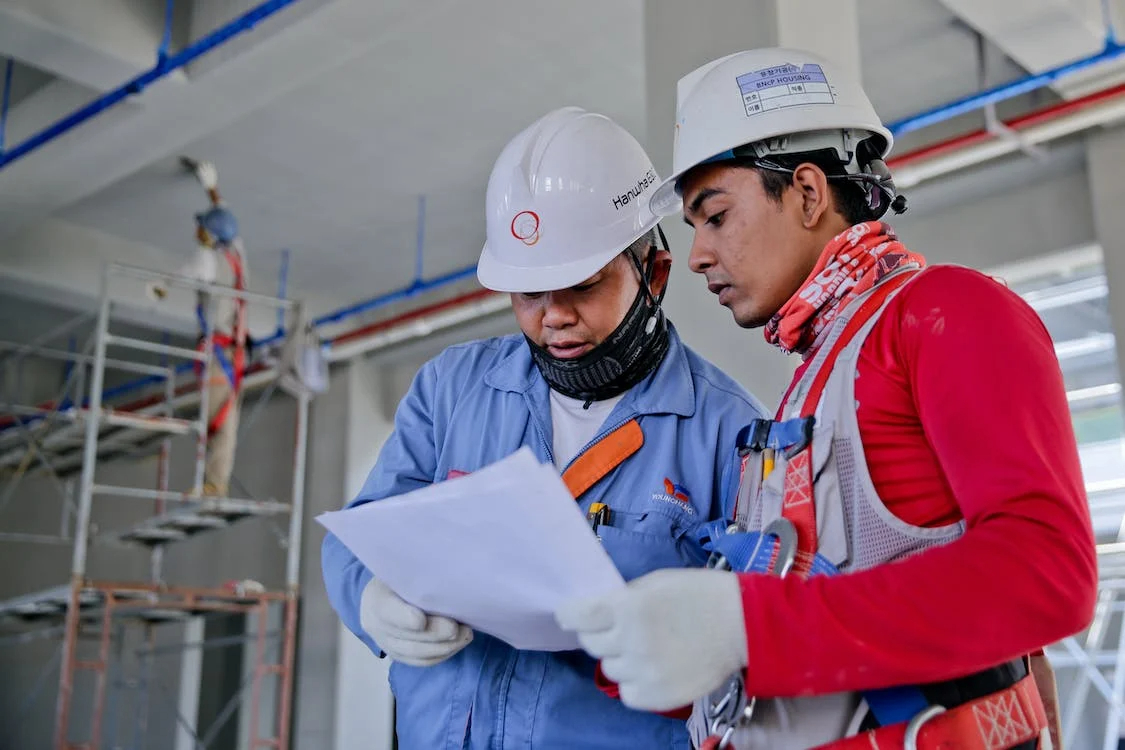
Role of Building Codes in Promoting Green Construction
Construction industry has undergone a transformative shift towards sustainability, in today’s rapidly evolving world, where environmental concerns are taking center stage. Green construction practices are becoming increasingly vital to minimize the environmental impact of buildings. One significant driver of this transformation is the implementation of building codes that emphasize eco-friendly and energy-efficient construction methods. In this article, we delve into the pivotal role that building codes play in promoting green construction.
Introduction
Green construction, also known as sustainable construction, revolves around creating buildings that are environmentally responsible, resource-efficient, and economically viable. As our planet faces unprecedented environmental challenges, the construction industry must adapt to sustainable practices. Building codes, a set of regulations that govern construction practices, are playing an instrumental role in driving the adoption of green construction techniques.
Understanding Green Construction
Green construction goes beyond conventional construction by considering the entire lifecycle of a building. It takes into account factors such as energy efficiency, resource conservation, waste reduction, and indoor air quality. The ultimate goal is to minimize a building’s carbon footprint while maximizing its functionality and efficiency.
The Significance of Building Codes
Building codes serve as the backbone of the construction industry, ensuring that structures are safe, durable, and compliant with regulations. In recent years, these codes have evolved to incorporate environmental considerations. This shift is crucial as it compels builders and developers to prioritize sustainable practices during the planning, design, and construction phases.
Integration of Sustainable Materials
Benefits of Sustainable Materials
Using sustainable materials, such as recycled steel, reclaimed wood, and energy-efficient glass, offers numerous benefits. These materials not only have a lower environmental impact but also contribute to healthier indoor air quality.
Challenges and Solutions
However, integrating sustainable materials can pose challenges, including higher upfront costs and limited availability. To overcome these challenges, incentives and subsidies can be provided to encourage the adoption of such materials.
Energy-Efficient Design
Importance of Energy Efficiency
Energy-efficient design focuses on reducing energy consumption through strategies like better insulation, advanced HVAC systems, and smart lighting. This not only conserves resources but also significantly cuts down operational costs for building owners.
Innovations in Design
Innovations like passive solar design and green roofs are transforming how buildings harness and utilize energy. Passive solar design, for instance, utilizes the sun’s energy for heating and cooling, reducing the need for artificial systems.
Waste Management Strategies
Reducing Construction Waste
Construction generates a substantial amount of waste. Green construction, however, aims to minimize this waste by practicing efficient construction techniques, such as modular construction and prefabrication.
Recycling and Reuse
Building codes encourage recycling and reuse of materials during construction and demolition. This reduces the burden on landfills and conserves valuable resources.
Water Conservation Measures
Efficient Water Usage
Water scarcity is a pressing global issue. Green construction addresses this by incorporating water-efficient fixtures, rainwater harvesting systems, and graywater recycling.
Rainwater Harvesting
Rainwater harvesting captures rainwater and stores it for later use. This not only reduces the demand on municipal water supplies but also prevents flooding and erosion.
Renewable Energy Integration
Solar Power Implementation
Solar panels on buildings are becoming a common sight. Building codes often require or incentivize the integration of solar panels to generate clean, renewable energy on-site.
Wind Energy Harnessing
In regions with ample wind resources, building codes can promote the installation of small-scale wind turbines, further diversifying the energy mix.
Indoor Environmental Quality
Ventilation and Air Quality
Green buildings prioritize indoor air quality by implementing effective ventilation systems and using low-emission building materials. This leads to healthier and more productive indoor environments.
Natural Lighting Benefits
Maximizing natural light not only reduces the need for artificial lighting but also positively impacts occupants’ well-being and circadian rhythms.
Green Building Certifications
LEED Certification
The Leadership in Energy and Environmental Design (LEED) certification is globally recognized. It awards points for sustainable practices, motivating builders to adhere to green construction principles.
BREEAM Certification
The Building Research Establishment Environmental Assessment Method (BREEAM) certification, prominent in Europe, assesses buildings based on sustainability performance.
Challenges in Implementing Building Codes
Cost Considerations
One major challenge is the perception of higher costs associated with green construction. While upfront costs may be marginally higher, the long-term operational savings often outweigh the initial investment.
Lack of Awareness
Another obstacle is the lack of awareness among stakeholders about the benefits of green construction. Education and awareness campaigns can help bridge this gap.
Global Examples of Successful Implementation
The Case of Singapore
Singapore’s Building and Construction Authority (BCA) has implemented the Green Mark Scheme, which incentivizes builders to adopt sustainable practices. This has resulted in a growing number of energy-efficient buildings.
Green Initiatives in Sweden
Sweden’s stringent building codes have driven innovations in energy efficiency and renewable energy integration. The country’s approach serves as a model for sustainable construction practices.
Future Outlook
Technological Advancements
Advancements in technology, such as Building Information Modeling (BIM) and smart building systems, will play a pivotal role in making green construction more efficient and cost-effective.
Policy Enhancements
Governments worldwide are recognizing the importance of green construction. Strengthening building codes and offering incentives will continue to drive the industry towards sustainability.
Conclusion
Building codes are instrumental in shaping the construction industry’s trajectory towards sustainability. As the world grapples with environmental challenges, these codes provide a framework for integrating green practices into every aspect of construction. By mandating environmentally friendly design, material usage, energy efficiency, and waste management, building codes foster a more responsible and ecologically conscious approach to construction.
Green construction, guided by these codes, not only reduces the carbon footprint of buildings but also enhances occupants’ well-being and quality of life. Energy savings, improved indoor air quality, and the use of renewable resources are just a few of the benefits that stem from adhering to these regulations. As technology continues to evolve and awareness grows, the construction industry will see even greater innovation and efficiency in its pursuit of sustainability.
FAQs
Q1: Are building codes the same in every country?
A1: Building codes vary from country to country, reflecting local regulations, climate conditions, and priorities. However, many countries are adopting or adapting green building principles into their codes.
Q2: How do building codes encourage the use of renewable energy?
A2: Building codes often include provisions that incentivize or mandate the incorporation of renewable energy sources, such as solar panels or wind turbines, into building designs.
Q3: What role do architects play in implementing green building codes?
A3: Architects play a crucial role in designing buildings that comply with green building codes. They incorporate sustainable materials, energy-efficient systems, and innovative designs to meet these requirements.
Q4: Are there financial benefits to building green?
A4: Yes, building green can lead to long-term cost savings due to reduced energy consumption, lower maintenance costs, and potential tax incentives or rebates for meeting green building standards.
Q5: How can I ensure my construction project adheres to green building codes?
A5: Consulting with professionals familiar with green building practices, such as architects, engineers, and contractors, can help ensure your project meets the necessary codes and standards.
References
If you need references for specific information in the content, I recommend referring to websites like the U.S. Green Building Council (USGBC), World Green Building Council (WorldGBC), International Code Council (ICC), and academic publications in related fields can provide credible sources.
Design & Construction
Strategies for Retrofitting Existing Buildings to Green Standards
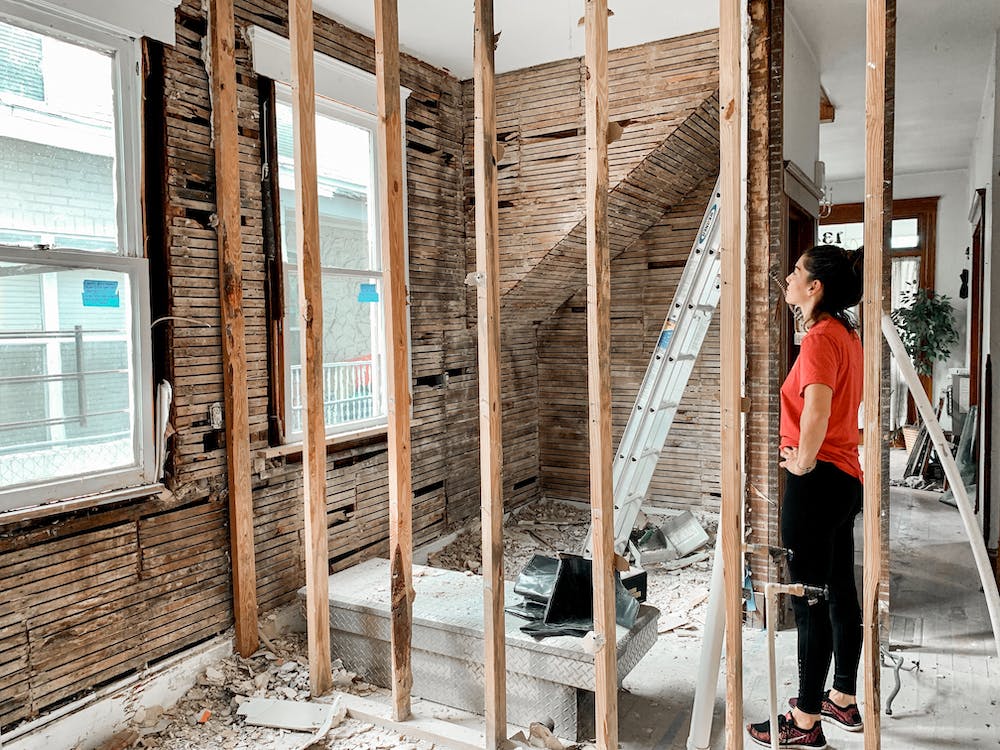
Retrofitting existing buildings to green standards is a crucial step in achieving sustainability goals and reducing environmental impact. Green retrofits involve upgrading the energy efficiency, water usage, and overall environmental performance of older structures. By implementing thoughtful strategies, building owners can transform their properties into eco-friendly and resource-efficient spaces. This article explores various strategies for retrofitting existing buildings to meet green standards and contribute to a more sustainable built environment.
Understanding Green Building Retrofits
Green building retrofits involve upgrading existing structures to meet modern sustainability standards. The goal is to enhance energy efficiency, reduce resource consumption, and minimize environmental impact.
Energy Efficiency Upgrades
Improving energy efficiency is a primary focus of green retrofits. This can include upgrading windows and doors, adding insulation, sealing air leaks, and enhancing the building envelope to reduce heating and cooling demands.
Lighting Improvements
Replacing outdated lighting fixtures with energy-efficient LED lights can significantly reduce energy consumption and maintenance costs. Implementing daylighting strategies can also reduce the need for artificial lighting.
HVAC System Optimization
Optimizing heating, ventilation, and air conditioning (HVAC) systems can result in substantial energy savings. Installing programmable thermostats, upgrading to energy-efficient equipment, and regular maintenance are essential steps in HVAC retrofitting.
Insulation and Air Sealing
Proper insulation and air sealing prevent energy loss and improve indoor comfort. Insulating walls, roofs, and floors can reduce heating and cooling needs, leading to lower energy bills.
Renewable Energy Integration
Consider integrating renewable energy sources, such as solar panels or wind turbines, to supplement the building’s energy needs. Generating clean energy on-site reduces reliance on conventional energy sources.
Water Conservation Measures
Water-saving retrofits can include low-flow fixtures, efficient irrigation systems, and water-efficient appliances. Reducing water usage benefits both the environment and lowers water bills.
Low-Flow Fixtures and Appliances
Replacing old plumbing fixtures and appliances with water-efficient alternatives helps conserve water and contributes to green building goals.
Rainwater Harvesting and Greywater Recycling
Implementing rainwater harvesting systems allows buildings to collect and store rainwater for non-potable uses. Greywater recycling systems treat and reuse lightly used water from sinks and showers, further conserving water.
Sustainable Materials and Finishes
Using eco-friendly and sustainable building materials during retrofitting reduces the building’s environmental footprint. Look for materials with low embodied energy and recyclable content.
Indoor Air Quality Enhancement
Improving indoor air quality through proper ventilation, air purification, and the use of low-emission materials ensures a healthier and more comfortable indoor environment for occupants.
Green Roof and Vertical Garden Installations
Green roofs and vertical gardens can be installed on existing buildings to provide additional insulation, improve air quality, and create habitat for wildlife.
Smart Building Technology Integration
Integrating smart building technologies, such as energy management systems and automated controls, enhances energy efficiency and occupant comfort.
Behavior Change and Occupant Engagement
Educating occupants about sustainable practices and encouraging behavior change can significantly impact resource conservation and sustainability efforts.
Life Cycle Analysis and Cost-Effectiveness
Conducting life cycle assessments helps evaluate the environmental impact of retrofitting strategies and determine their long-term cost-effectiveness.
Green Building Certifications and Incentives
Seeking green building certifications, like LEED (Leadership in Energy and Environmental Design), can provide guidance and recognition for successful retrofitting projects. Additionally, governments and organizations often offer incentives for green retrofits.
Phased Retrofitting Approaches
For large-scale retrofits, phasing the project allows for more manageable implementation and financing, enabling building owners to achieve green standards progressively.
Collaboration with Green Consultants and Contractors
Working with green building consultants and contractors ensures that retrofitting strategies align with sustainability goals and best practices.
Public Awareness and Education
Raising public awareness about the importance of green retrofits and their benefits can encourage more building owners to adopt sustainable practices.
Conclusion
Retrofitting existing buildings to green standards is a critical endeavor to create a more sustainable and resilient built environment. By implementing energy efficiency upgrades, optimizing HVAC systems, integrating renewable energy, and adopting water conservation measures, building owners can significantly reduce their environmental impact and operating costs. Sustainable materials, green technologies, and occupant engagement further contribute to the success of retrofitting projects. Collaborating with green consultants and pursuing certifications adds credibility and recognition to these eco-friendly efforts. Ultimately, green building retrofits play a vital role in addressing climate change and ensuring a sustainable future for generations to come.
-

 Green Building Concepts10 months ago
Green Building Concepts10 months agoImportance of Indoor Air Quality in Green Buildings
-

 Design & Construction10 months ago
Design & Construction10 months agoExploring Passive House Design Principles for Energy Efficiency
-

 Green Building Concepts9 months ago
Green Building Concepts9 months agoEconomics of Green Building: Cost Savings and Long-Term Value
-
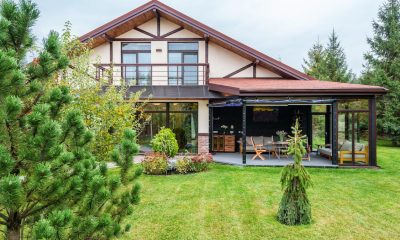
 Green Building Concepts10 months ago
Green Building Concepts10 months agoBenefits of Green Building for Sustainable Development
-

 Sustainable Materials10 months ago
Sustainable Materials10 months agoA Guide to Choosing Eco-Friendly Building Materials
-

 Green Building Concepts10 months ago
Green Building Concepts10 months agoWater Conservation Strategies for Green Building Projects


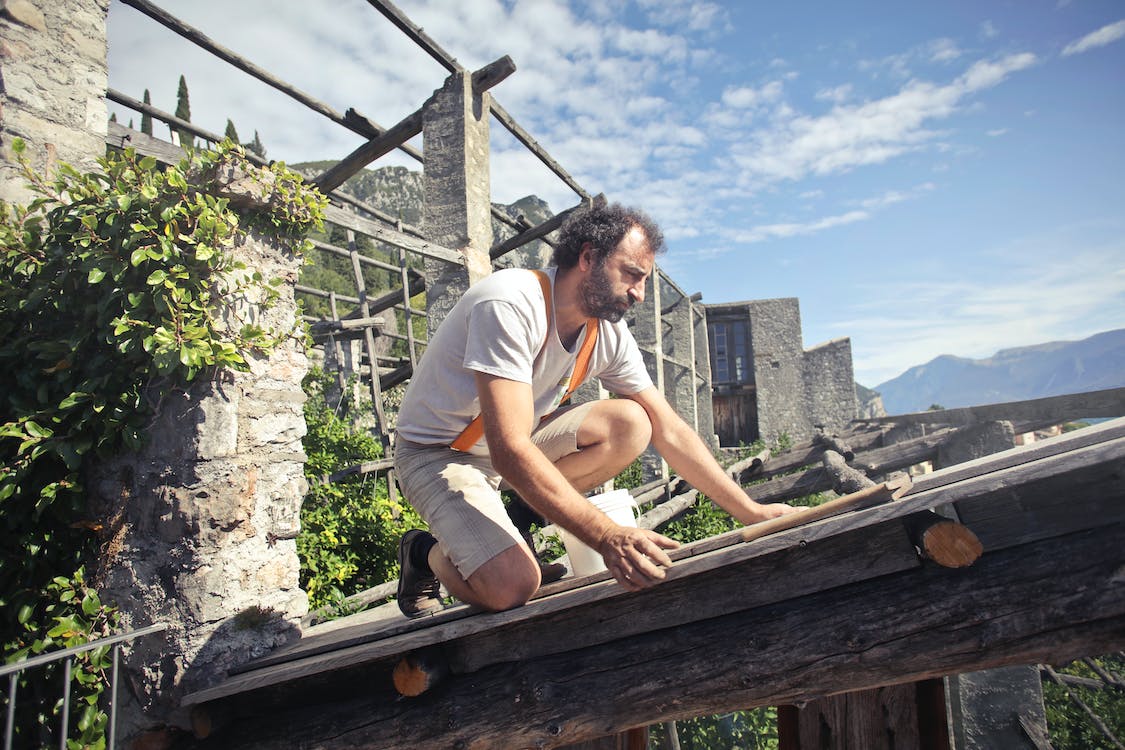
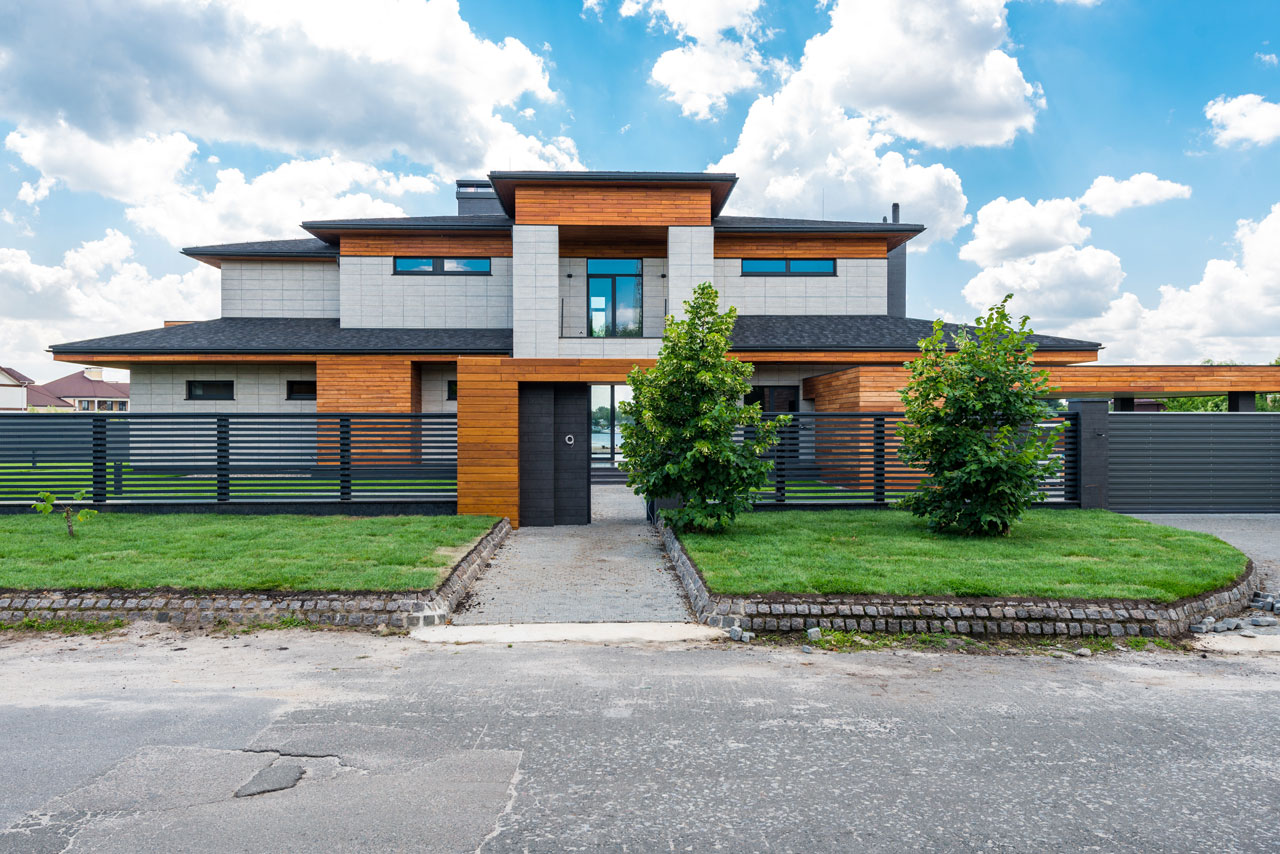
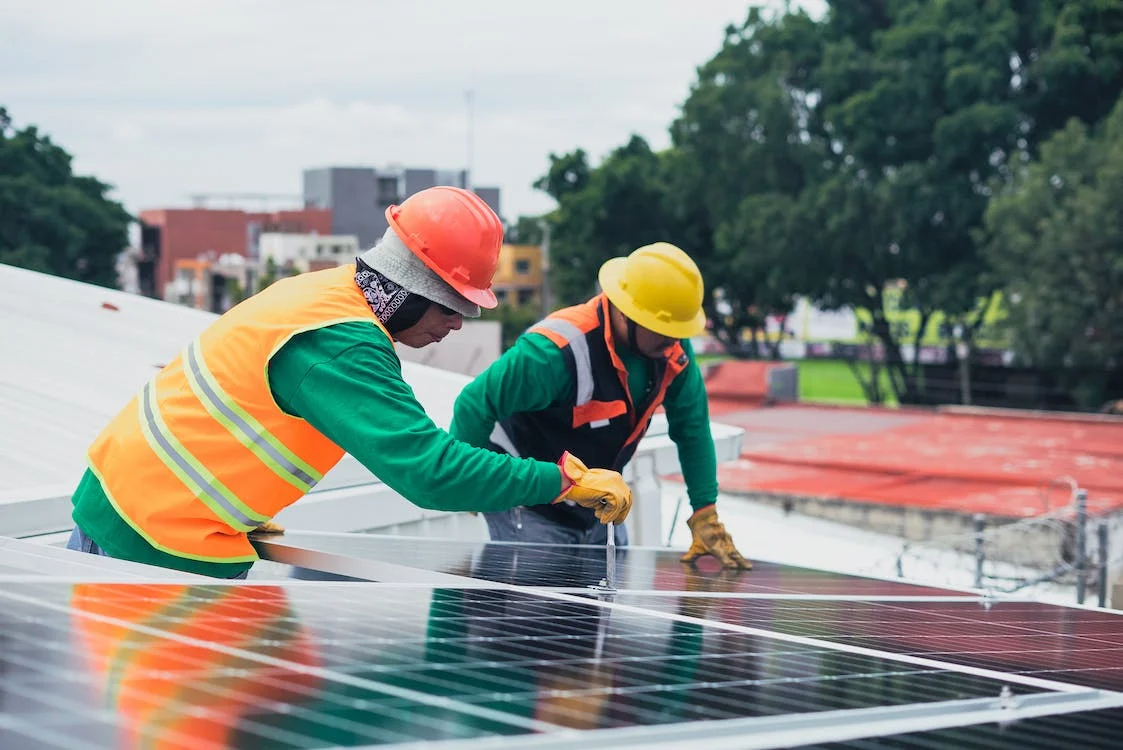

![Monthly Building Resources [Digital] - April 2023](https://www.geotimes.xyz/wp-content/uploads/2023/04/Title-ebook-f.jpg)








Pingback: Rooftop Gardening Permitted by LDA Building Bylaws - Monthly Building Resources
Pingback: Retrofitting Existing Buildings to Green Standards